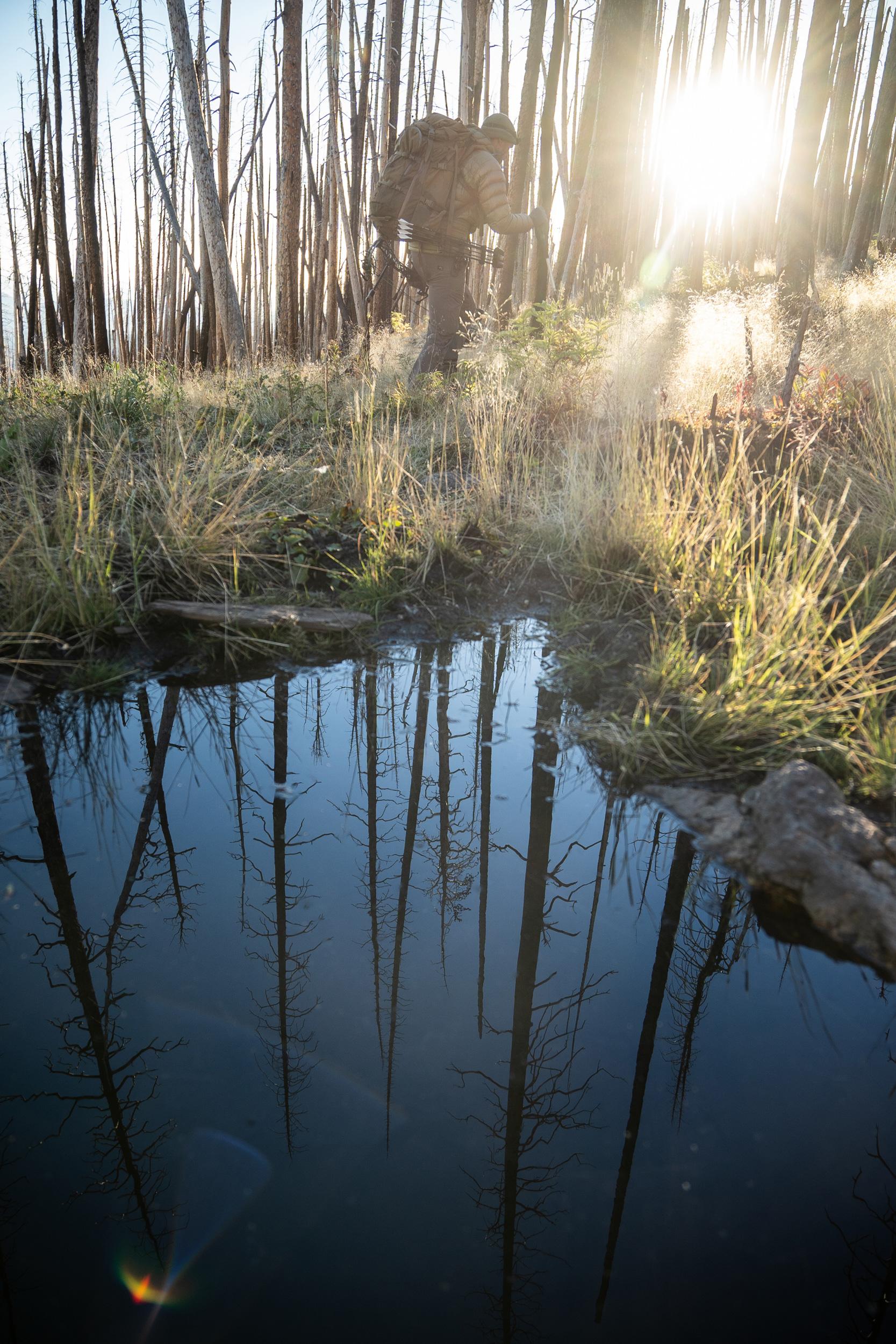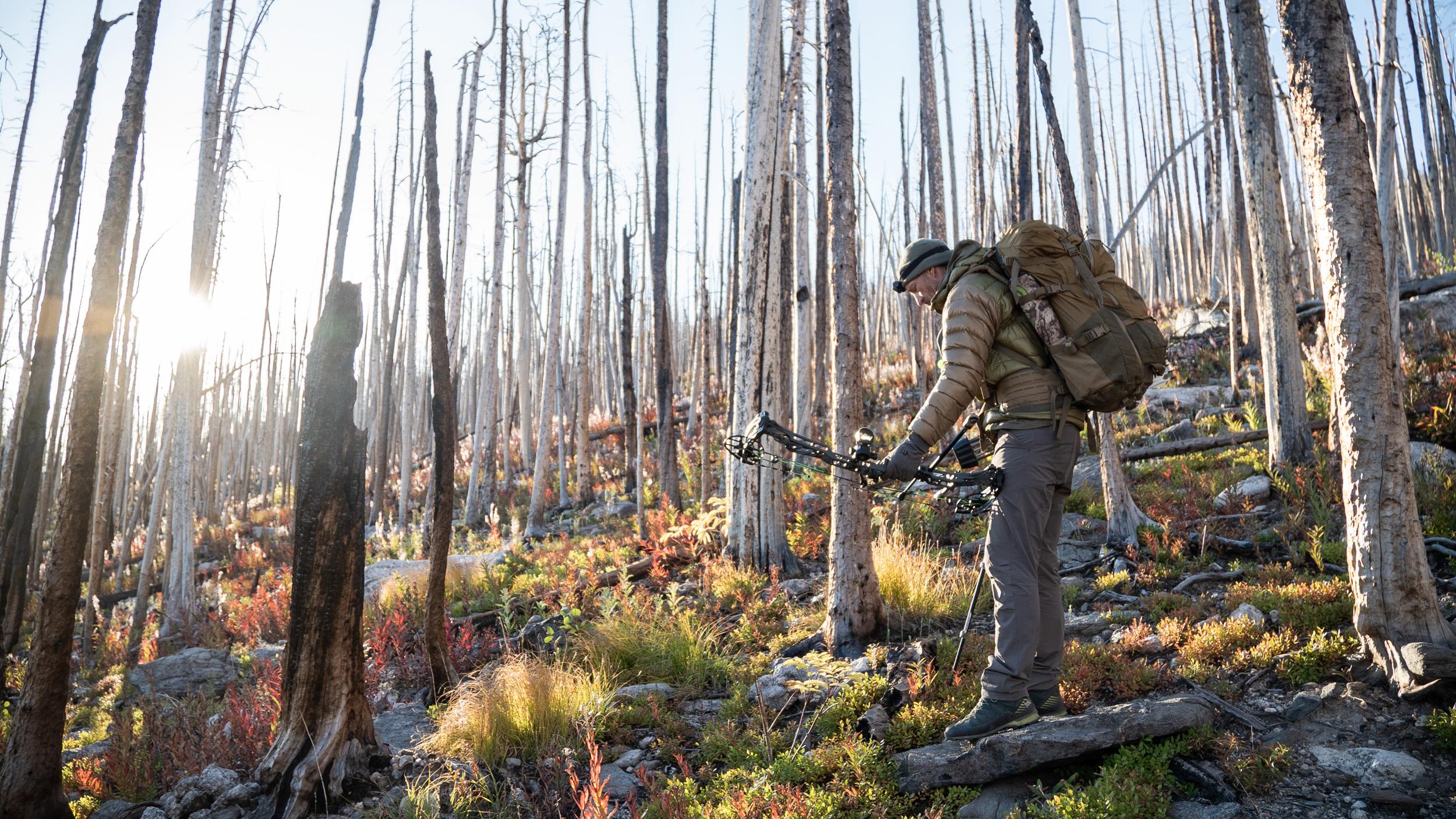





When it comes to elk hunting and finding bulls, some say Trail Kreitzer is one of a kind, and we've even gone so far as to say he is part elk! He's also known for diving into the weeds regarding biology information and how to use that for hunt planning and research. In the above video, Trail goes over how to find the best elk hunting habitat for your upcoming hunt and ways to use this information on GOHUNT Maps while e-scouting this year.
Finding the best elk habitat is crucial for a successful hunt. This article explores key strategies that can help hunters locate ideal elk habitats by understanding elk behavior and using digital tools like GOHUNT Maps. The focus is on identifying critical factors such as water, cover, and feed, which are essential for elk survival and can significantly impact hunting outcomes.
Water is one of the most vital factors for elk, especially during the warmer months from spring through fall. Elk consume up to four gallons per day, particularly in arid regions like Arizona, New Mexico, and parts of Nevada and Utah. Understanding the importance of water sources, such as standing water (ponds, cattle troughs) versus running water (streams, creeks), can be instrumental in locating elk. Standing water is often preferred by elk due to lower predation risks and possibly higher nutritional content, making these areas prime locations for spotting elk.
Key points:
Elk require cover for security and comfort, making the identification of bedding areas crucial during the scouting process. Elk typically choose bedding sites that provide protection from predators and the elements. They prefer shady, dark timber areas with a closed canopy that offers wind protection and cooler temperatures. Understanding the landscape's topography, such as north or northeast-facing slopes, can help hunters identify potential bedding areas during early hunting seasons.
For late-season hunts, elk might shift to south-facing slopes, which provide warmth from sunlight and are often richer in feed due to better sunlight exposure. Using GOHUNT’s terrain analysis tool, hunters can highlight these slopes and assess the size and canopy coverage to determine their suitability as elk bedding sites.
Scouting tips:
Elk are large animals that require a substantial amount of feed, with a daily intake of 12 to 18 pounds of forage. Their diet consists of grasses, forbs, and other vegetation, which varies depending on the season. During the summer and early fall, forbs make up a significant portion of their diet, while grasses become more important as they move into the later months.
Identifying areas with abundant feed is crucial, and hunters should look for open meadows, clear cuts, and burn scars, which are often rich in vegetation. Burn scars, particularly those less than five years old, can be highly productive feeding grounds due to the regrowth of vegetation following a fire.
Top forage types include Idaho fescue, bluebunch wheatgrass, and sandberg bluegrass. Ideal feeding grounds often overlap with open meadows, recent burns, and beetle-kill zones—areas with increased sunlight and surface water.
Elk are generalist feeders, consuming forbs, grasses, shrubs, and even tree bark. Their dietary focus shifts with the seasons:
Elk thrive in mosaics of feeding and bedding areas. Edge habitat—where open meadows meet timber—is ideal for quick access to food and cover.
Elk also favor moderate slopes (15–30%) and features like benches and saddles for bedding. Avoid overly steep terrain (>40%), which elk find challenging.
Modern mapping tools like GOHUNT Maps offer hunters advanced features to enhance their scouting efforts. Elk hunters would be wise to leverage maps before and during their hunt to maximize success.
GOHUNT's Terrain Analysis Tool can highlight specific landscape features such as north-facing slopes for elk, while GOHUNT’s Historical Imagery allows hunters to assess vegetation and water availability over time. Additionally, using the layers available in these tools, hunters can easily identify areas with the right combination of water, cover, and feed, significantly increasing the likelihood of finding elk.
Successfully locating elk requires a comprehensive understanding of their habitat needs, particularly water, cover, and feed. By combining this knowledge with the use of advanced mapping tools, hunters can strategically identify and scout the best areas for elk hunting. Whether preparing for an early or late-season hunt, these strategies can help ensure that hunters are well-equipped to find and harvest elk effectively.
For more information on using some of these tactics, as well as other methods in your e-scouting efforts for elk this summer, check out the articles below:
Prioritize standing water over running sources—elk often prefer ponds, seeps, and cattle troughs.
Consider crepuscular behavior: elk usually visit water sources at dawn and dusk, though in hot climates, midday visits are common.
Wallows—muddy depressions where bulls coat themselves in scented mud—are hotspots for action, especially during the rut.
Seek North and Northeast facing slopes for early season bedding areas.
Use GOHUNT Maps to highlight terrain features like benches and flats that indicate preferred bedding locations.
Bedding zones should span 30–60+ acres with 75–100% canopy coverage for optimal security.
Summer: High-protein forbs dominate, crucial for nursing cows and antler-growing bulls.
Fall: Diet transitions to grasses as forbs dry up.